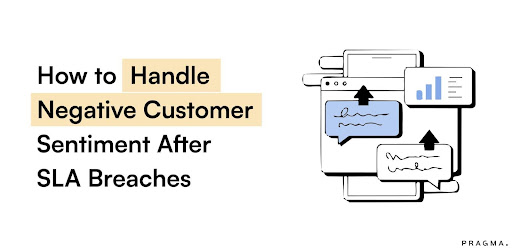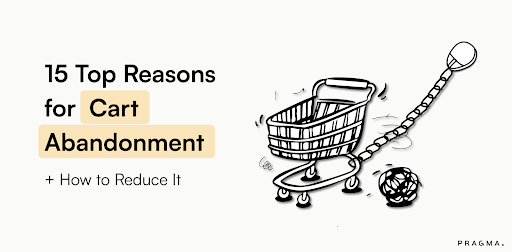For India D2C Ecommerce Brands
Did you know that marketing automation campaigns work much better than the alternative?
Why? Because of the data that is looped to help you optimise future campaigns and more. Because the right automation is technically ‘Real-time Optimisation’.
Operation areas where Automation play a huge role:
1. Lead Generation
2. Customer Retention Improvement
3. Dynamic Omni Channel Messaging (with product recommendation)
4. Abandoned Cart Retention
Marketing automation is the unsung hero of modern D2C ecommerce. It’s the silent engine running behind the scenes, doing the work that would otherwise take a village. But here’s the thing—automation isn’t magical. You don’t just flip a switch and watch the sales roll in. It takes rigorous optimization to make marketing automation truly effective.
Let’s dive deep into the 7 Steps to Optimise Marketing Automation For India D2C Ecommerce Brands, specifically tailored for Indian D2C ecommerce brands. From the pre-purchase journey to post-delivery, each phase plays a crucial role in making sure you’re not just automating—you're winning.
The 7 Step process followed:
1. Ongoing Campaign Analysis – The Never-Ending Story
In the D2C space, campaign analysis is like parenting—just when you think you’ve figured it out, something new comes up. The idea of “set it and forget it” is nothing but a fairy tale. Campaigns need constant monitoring, tweaking, and re-evaluation, especially in a fast-evolving market like India’s.
Pre-purchase Phase
In this phase, your focus should be on metrics like:
- Click-through rate (CTR): Are your emails and SMS campaigns even getting opened?
- Engagement rates: Are your customers clicking, interacting, or just bouncing away?
- Conversion rates: How many people are buying after engaging with your ads or emails?
Major Operational Area: Lead Generation
Continuous analysis of campaigns allows brands to identify which strategies yield the best results.
Example from an Indian D2C Fashion Brand:

A popular D2C skincare brand in India noticed a drop in their email open rates post-monsoon. Why? Their content was too product-centric and not aligned with the season's shift. By adding monsoon-specific skincare tips and tying it to their product line, they saw a 22% improvement in open rates and a 15% increase in conversions.
Key Pre-Purchase Campaign Metrics

The takeaway? Campaign analysis is your best friend. If you’re not continuously monitoring, you’re likely leaving money on the table.
2. Selection of Area of Optimisation – Focus or Fail
While it may feel tempting to revamp every corner of your marketing strategy, here’s the hard truth: you can’t fix everything at once. Start small and choose optimization areas that promise the biggest bang for your buck. Maybe your email open rates are doing great, but your SMS campaigns are lagging behind. Or perhaps your abandoned cart recovery rate is below the industry average. Focus on what moves the needle.
Pre-purchase Phase: Optimising Lead Acquisition
You might notice that your email list is growing, but your conversion rate isn’t. The problem could lie in your lead quality. Are you capturing information from people who are genuinely interested in your products, or are you just casting a wide net?
Lead Acquisition Funnel for D2C Ecommerce Brands

Post-purchase Phase: Improving Customer Retention
If your pre-purchase journey is flawless but customers aren’t coming back, then it’s time to optimise post-purchase workflows like loyalty programs, follow-up emails, and post-purchase SMS.
Real-world data shows that 80% of a D2C brand’s future revenue comes from just 20% of its existing customers. It’s time to capitalise on this loyalty loop.
Post-purchase Engagement Metrics

The secret sauce of optimization? Don’t try to fix everything. Pick the areas that make the most sense for your brand’s current phase and focus efforts there.
Major Operational Area: Customer Retention Improvement
Identify key areas that need optimization to enhance customer retention.
Example from an Indian D2C Beauty Brand:

3. Selection of Measurement Methods – The Sherlock Holmes Approach
Operational Area: Dynamic Omni Channel Messaging
Selecting precise metrics to measure the impact of omni-channel strategies.
Example:

Numbers. Data. KPIs. No matter how poetic or sarcastic you want to be about marketing, this is the part where cold, hard data reigns supreme. The way you measure success will depend on what part of the funnel you’re optimising, and it’s critical that your metrics match your goals.
Pre-Purchase: Metrics to Watch
- Click-Through Rate (CTR): Are your ads and emails actually engaging your audience?
- Cost per Acquisition (CPA): How much are you spending to acquire a single customer? For Indian D2C brands, a CPA of ₹500-₹700 is considered healthy, but this varies widely by product category.
Pre-Purchase Metrics and Their Benchmarks

Post-Purchase: Metrics for Retention
Now that you’ve hooked the customer, it’s time to think long-term. Key post-purchase metrics include:
- Repeat Purchase Rate: How often are customers coming back? Aim for 20-30% in Indian D2C.
- Customer Lifetime Value (CLV): How much is each customer worth over time? The higher your CLV, the better your automation efforts are performing.
Post-Purchase Metrics and Benchmarks

Numbers don’t lie. Use them as your guiding light when optimising any aspect of your automation strategy.
4. Project of Optimisation Activities
Major Operational Area: Abandoned Cart Retention
Strategizing the optimization activities for reducing cart abandonment.
Once you’ve selected your area of optimisation and know how you’re measuring success, it’s time to plan your projects. Here’s where things get tactical—setting up A/B tests, tweaking your email workflows, or segmenting your audience for better targeting.
Pre-purchase Phase: Personalisation
Optimisation starts with segmentation and personalisation. A D2C fashion brand in India, for example, could segment based on customer preferences like ethnic wear vs. Western outfits, and then launch personalised email campaigns for each segment.
Real-world data shows that targeted marketing campaigns generate up to 760% more revenue than generic ones.
Customer Segmentation for Targeted Campaigns

Post-purchase Phase: Loyalty Programs
If you’re looking to optimise post-purchase engagement, consider launching a tiered loyalty program. Studies show that loyalty program members have a 75% higher purchase frequency than non-members.
Impact of Loyalty Programs on Post-purchase Engagement

Example from an Indian D2C Electronics Brand:

5. A/B Tests – The Lab Experiment Stage
A/B testing is the lifeblood of any optimisation strategy. Whether you’re testing email subject lines or the timing of your push notifications, it’s all about figuring out what works better, even if that means failing fast.
Pre-purchase: Testing Emails and SMS Campaigns
An Indian D2C electronics brand tested sending emails at different times of day to see when customers were more likely to convert. Turns out, emails sent at 8 PM had a 22% higher open rate than those sent at 9 AM.
A/B Testing Example

Conducting A/B tests to find the most effective strategy. Why? Because the right method varies with time, holiday period, offers used etc.
Example from an Indian D2C Lifestyle Brand:

6. Results Report – The Black Mirror Moment
Analysing and reporting the results to guide future strategies.
After all the hard work of setting up and executing your optimisations, it’s time for the most critical phase: evaluating the results. This is where you see whether your efforts have paid off or if you need to rethink your strategy. Think of it as your “Black Mirror” moment—where technology’s impact is both fascinating and occasionally horrifying.
Pre-purchase Results Reporting
When reporting on pre-purchase metrics, focus on understanding the customer journey from initial contact to conversion. Key metrics to report include:
- Lead Conversion Rate: How effectively are your leads turning into paying customers?
- Cost Per Lead (CPL): What’s the cost associated with acquiring each lead?
Reporting Pre-Purchase Metrics

Post-purchase Results Reporting
For post-purchase, assess the impact of your optimisations on customer retention and lifetime value. Key metrics include:
- Customer Lifetime Value (CLV): How much revenue is each customer generating over their lifetime?
- Repeat Purchase Rate: How often do customers return to make additional purchases?
Reporting Post-Purchase Metrics

A leading D2C health supplement brand in India noticed that their post-purchase email campaigns had negligible impact on repeat purchases. By revamping their email strategy with personalised follow-ups and special discounts, they increased their repeat purchase rate by 30% and CLV by 40%.
Impact of Post-Purchase Email Optimisation

Example Report for Optimising Campaigns:

7. Deployment of Changes – Time to Hit the Big Red Button
After analysing the results, it’s time to make changes based on what you’ve learned. This step is about implementing the final tweaks and preparing for the next cycle of optimisation. It’s akin to the final edit of a movie—make sure everything’s polished before the premiere.
Pre-purchase Changes
Based on the results of your A/B tests and campaign analyses, make the necessary adjustments to your marketing strategies. This could include refining your audience segmentation, adjusting your ad creatives, or optimising your landing pages.
Implementation Plan for Pre-Purchase Changes

Post-purchase Changes
For post-purchase optimisations, implement changes to enhance customer experience and retention. This could involve launching new loyalty programs, improving post-purchase email flows, or enhancing customer support.
Implementation Plan for Post-Purchase Changes

An Indian D2C fashion brand implemented changes based on their results report, including enhancing their customer support and introducing a tiered loyalty program. Post-implementation, they saw a 50% increase in customer retention and a 35% rise in average order value.
Impact of Implemented Changes

Implementing successful strategies across the board is made easier with cross-brand data from 500+ D2C brands in India. Enough to understand and maximise the potential of an apparel brand, or an FMCG brand.
Strategic Deployment Example:
After identifying through A/B testing that personalised product recommendations in follow-up WhatsApp Campaigns increased conversion rates by 14%, the brand decided to implement this strategy across all its messaging channels.
This was done via WhatsApp first because WhatsApp tends to be the platform with highest open-rate and click-through rate. Making it the ideal platform to experiment quickly, and replicate for other platforms.
Note: Creating brand specific, holiday specific, product specific, and other specific flows based on the workings of these 7 Steps is what makes or breaks a D2C brands’ Marketing Automation - and that’s where a Pragmatic Brand shines brightest.
To Wrap Up: Automation Isn’t Just Technology, It’s an Art Form
Marketing automation can seem like a daunting beast, but when tackled with a structured approach, it transforms into a powerful ally. The seven steps—ongoing campaign analysis, area selection, measurement methods, optimisation activities, A/B testing, results reporting, and change deployment—are your guide to mastering this art.
From pre-purchase tweaks to post-delivery enhancements, the key is not just to automate but to optimise continuously. With real-world data guiding your way and a clear focus on impactful changes, you can elevate your D2C brand’s performance and ensure your automation efforts are as effective as possible.
Remember, while data might not be as glamorous as a high-fashion ad campaign, it’s the secret ingredient to success. Keep testing, keep refining, and watch as your marketing automation works its magic.

FAQs (Frequently Asked Questions On 7 Steps to Optimise Marketing Automation)
1. Why is marketing automation important for Indian D2C brands?
Marketing automation streamlines lead generation, customer retention, dynamic messaging, and cart recovery. It enables data-driven optimisation, saving resources and boosting conversion rates significantly.
2. How should Indian brands measure marketing automation success?
Key metrics include CTR, engagement rates, conversion rates pre-purchase, and repeat purchase rates and CLV post-purchase. Matching metrics to optimisation goals allows precise assessment and targeted improvement.
3. What is the role of A/B testing in campaign optimisation?
A/B testing allows brands to experiment with variables like email timing, messaging, and UI elements, identifying the most effective strategies. Indian D2C brands have seen up to 22% higher open rates by testing message timing.
4. Can you give examples of real-world optimisation impact?
An Indian fashion brand increased retention by 50% and average order value by 35% via loyalty programs and improved support. A skincare brand’s personalised email revamp increased repeat purchases by 30% and CLV by 40%.
5. Why is continuous reporting and change deployment vital?
Continuous analysis reveals what works and what doesn’t, enabling strategic refinement. Implementing data-backed changes ensures automation evolves with market trends and customer behaviour, driving sustained D2C growth.
Talk to our experts for a customised solution that can maximise your sales funnel
Book a demo


.png)

.png)